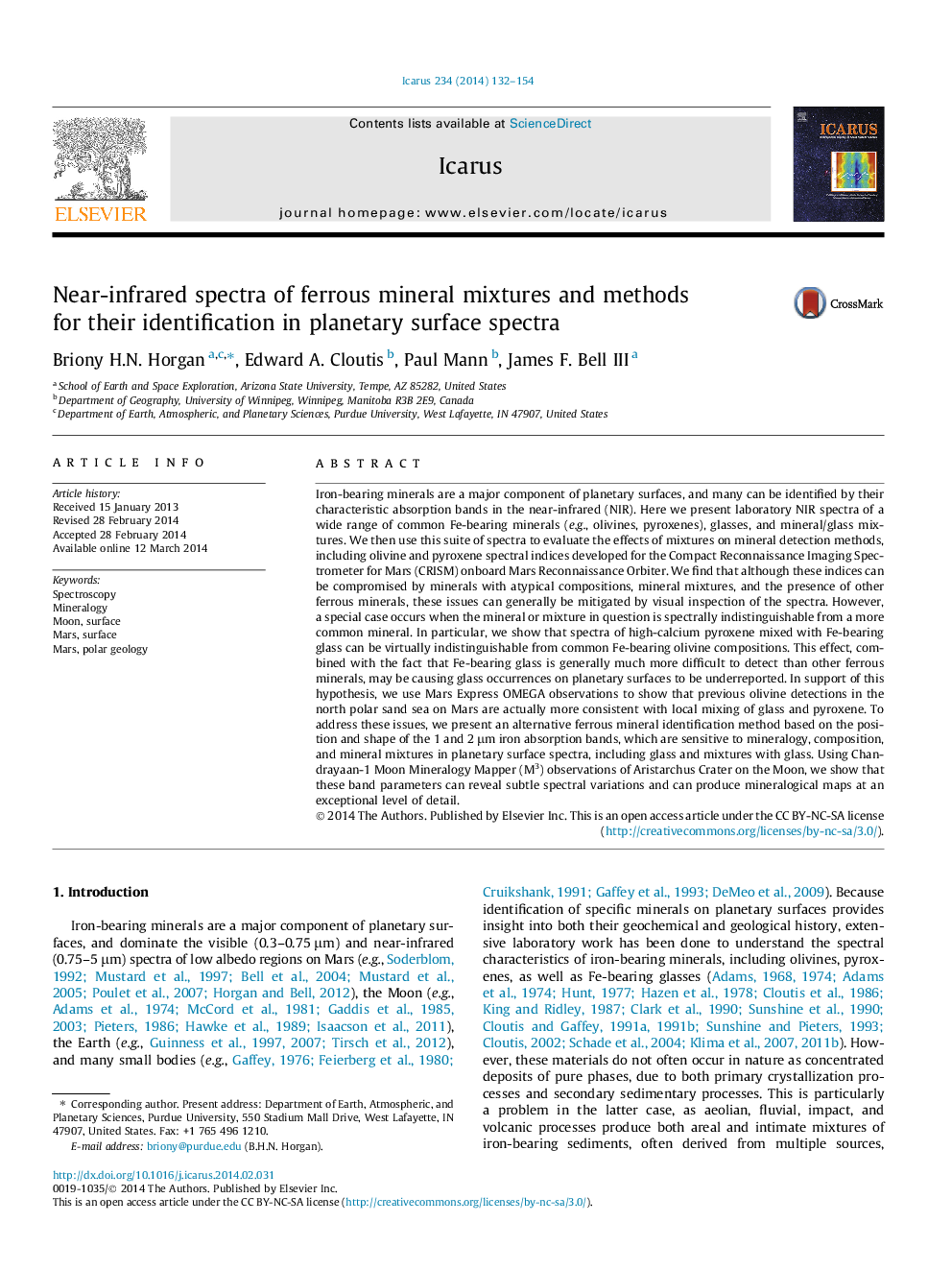| کد مقاله | کد نشریه | سال انتشار | مقاله انگلیسی | نسخه تمام متن |
|---|---|---|---|---|
| 8138199 | 1523556 | 2014 | 23 صفحه PDF | دانلود رایگان |
عنوان انگلیسی مقاله ISI
Near-infrared spectra of ferrous mineral mixtures and methods for their identification in planetary surface spectra
ترجمه فارسی عنوان
طیف های نزدیک به مادون قرمز مخلوط های معدنی فرآوری و روش های شناسایی آنها در طیف های سطح سیاره ای
دانلود مقاله + سفارش ترجمه
دانلود مقاله ISI انگلیسی
رایگان برای ایرانیان
کلمات کلیدی
طیف سنجی، کانی شناسی، ماه، سطح، مریخ، سطح، مریخ، زمین شناسی قطبی،
موضوعات مرتبط
مهندسی و علوم پایه
علوم زمین و سیارات
علوم فضا و نجوم
چکیده انگلیسی
Iron-bearing minerals are a major component of planetary surfaces, and many can be identified by their characteristic absorption bands in the near-infrared (NIR). Here we present laboratory NIR spectra of a wide range of common Fe-bearing minerals (e.g., olivines, pyroxenes), glasses, and mineral/glass mixtures. We then use this suite of spectra to evaluate the effects of mixtures on mineral detection methods, including olivine and pyroxene spectral indices developed for the Compact Reconnaissance Imaging Spectrometer for Mars (CRISM) onboard Mars Reconnaissance Orbiter. We find that although these indices can be compromised by minerals with atypical compositions, mineral mixtures, and the presence of other ferrous minerals, these issues can generally be mitigated by visual inspection of the spectra. However, a special case occurs when the mineral or mixture in question is spectrally indistinguishable from a more common mineral. In particular, we show that spectra of high-calcium pyroxene mixed with Fe-bearing glass can be virtually indistinguishable from common Fe-bearing olivine compositions. This effect, combined with the fact that Fe-bearing glass is generally much more difficult to detect than other ferrous minerals, may be causing glass occurrences on planetary surfaces to be underreported. In support of this hypothesis, we use Mars Express OMEGA observations to show that previous olivine detections in the north polar sand sea on Mars are actually more consistent with local mixing of glass and pyroxene. To address these issues, we present an alternative ferrous mineral identification method based on the position and shape of the 1 and 2 μm iron absorption bands, which are sensitive to mineralogy, composition, and mineral mixtures in planetary surface spectra, including glass and mixtures with glass. Using Chandrayaan-1 Moon Mineralogy Mapper (M3) observations of Aristarchus Crater on the Moon, we show that these band parameters can reveal subtle spectral variations and can produce mineralogical maps at an exceptional level of detail.
ناشر
Database: Elsevier - ScienceDirect (ساینس دایرکت)
Journal: Icarus - Volume 234, 15 May 2014, Pages 132-154
Journal: Icarus - Volume 234, 15 May 2014, Pages 132-154
نویسندگان
Briony H.N. Horgan, Edward A. Cloutis, Paul Mann, James F. III,
